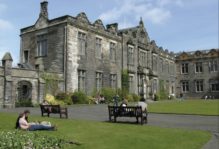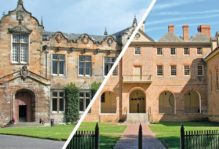Learning as an experience
It’s been a while, Tribe! In my hiatus I’ve been re-learning my American accent and getting finals and the beginning of the spring semester under my belt.
I thought with the start of the new term I would return to the most outstanding difference between St Andrews and William & Mary. The obvious and biggest difference between St Andrews and William & Mary is that one is in Scotland, the other in the States. Though they’re both accredited universities, the oldest in America and the third oldest English speaking in Europe (did you know St Andrews is older than the Aztecs?), they have very different academic settings. The way classes are structured and taught vary very differently.
At W&M, students take around five classes a semester, each ranging between 50 minutes to two hours. Classes are mostly discussion based, although some classes in the sciences are large lecture style settings with up to a hundred students. Smaller classes are 25-30 students with a single professor year-long. There is discussion facilitated by the professor posing questions for students to answer. There are midterms and finals and several assignments throughout the semester. Science classes are followed by labs where students have hands-on experience working in their field. There are research classes as well as classes dedicated to theses.
In Scotland, students take three classes maximum. Students have their first two years exploring several different subjects, known as sub-honours. Their third and fourth years are known as their honours years and they take three classes in their declared intention (their major). Classes are lecture based up to four times a week for one hour each. There are roving professors, for example, my modern history module, England, Scotland and Empire, had 15 lecturing professors. Lectures are supplemented by tutorials once a week led by either a professor or a PhD student. Tutorials consist of eight students in an office discussing the week’s material in depth with a lot of one on one discussion. There are up to two large examinations or essay assignments a semester not including the final. Students also do not receive a GPA until their honours years and thus first and second year is meant to prepare them for the rigour of honours.
It is a big cultural change that takes some getting used to. Classes in Scotland are shorter and are graded more harshly with little leeway to argue for points back. While I really like the way tutorials are run and have had very positive tutors and tutorial groups, others dislike the small group setting and prefer the lecture setting where one just absorbs information. I would posit that the William & Mary class style is a mixture of St Andrews’ lecture and tutorial, but there are still a lot of differences between the way students interact with their material.




No comments.
Comments are currently closed. Comments are closed on all posts older than one year, and for those in our archive.